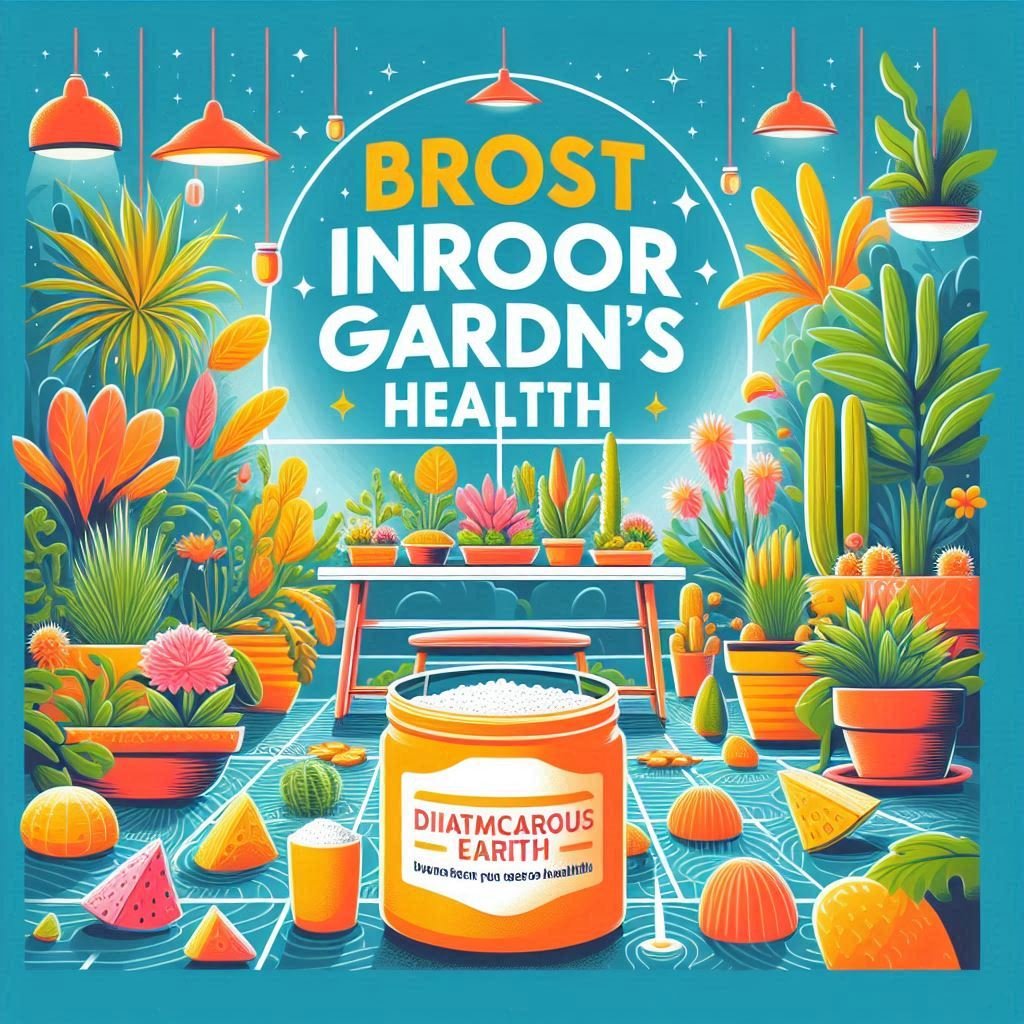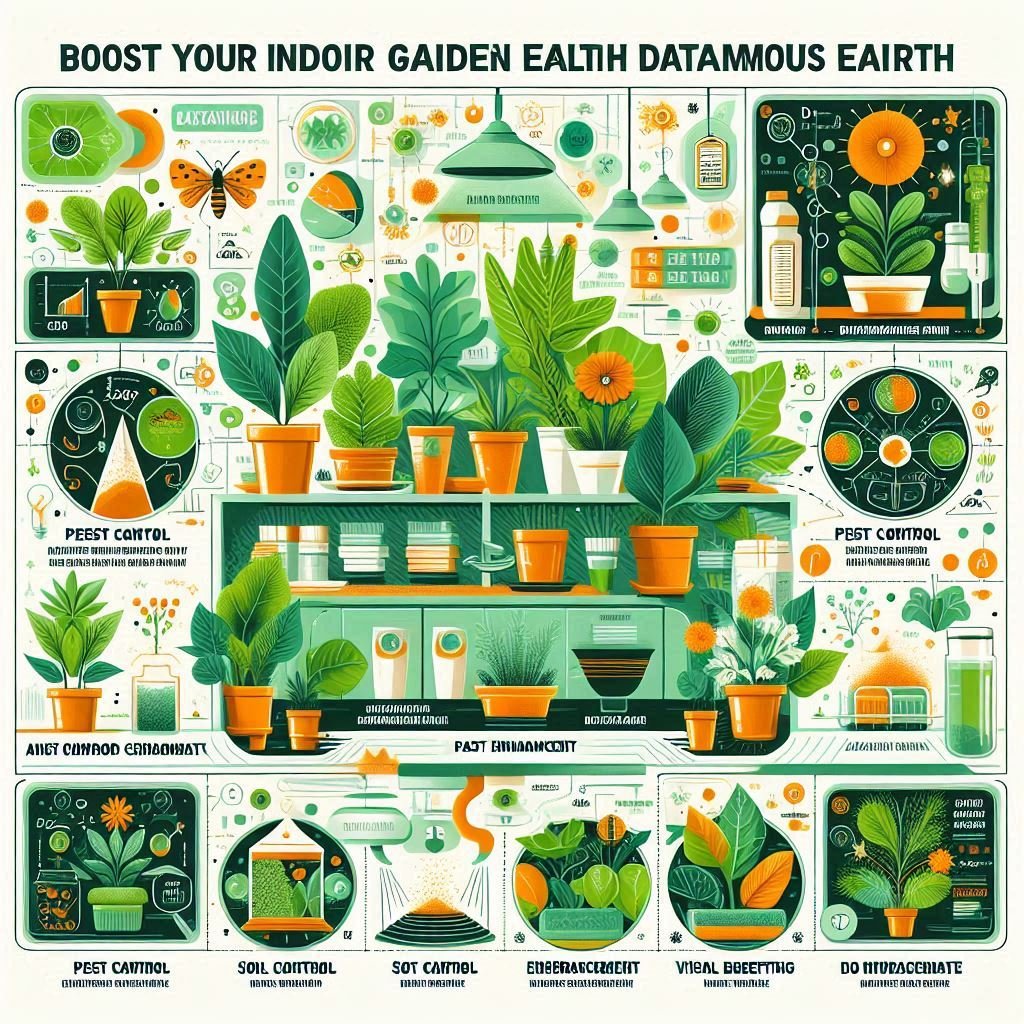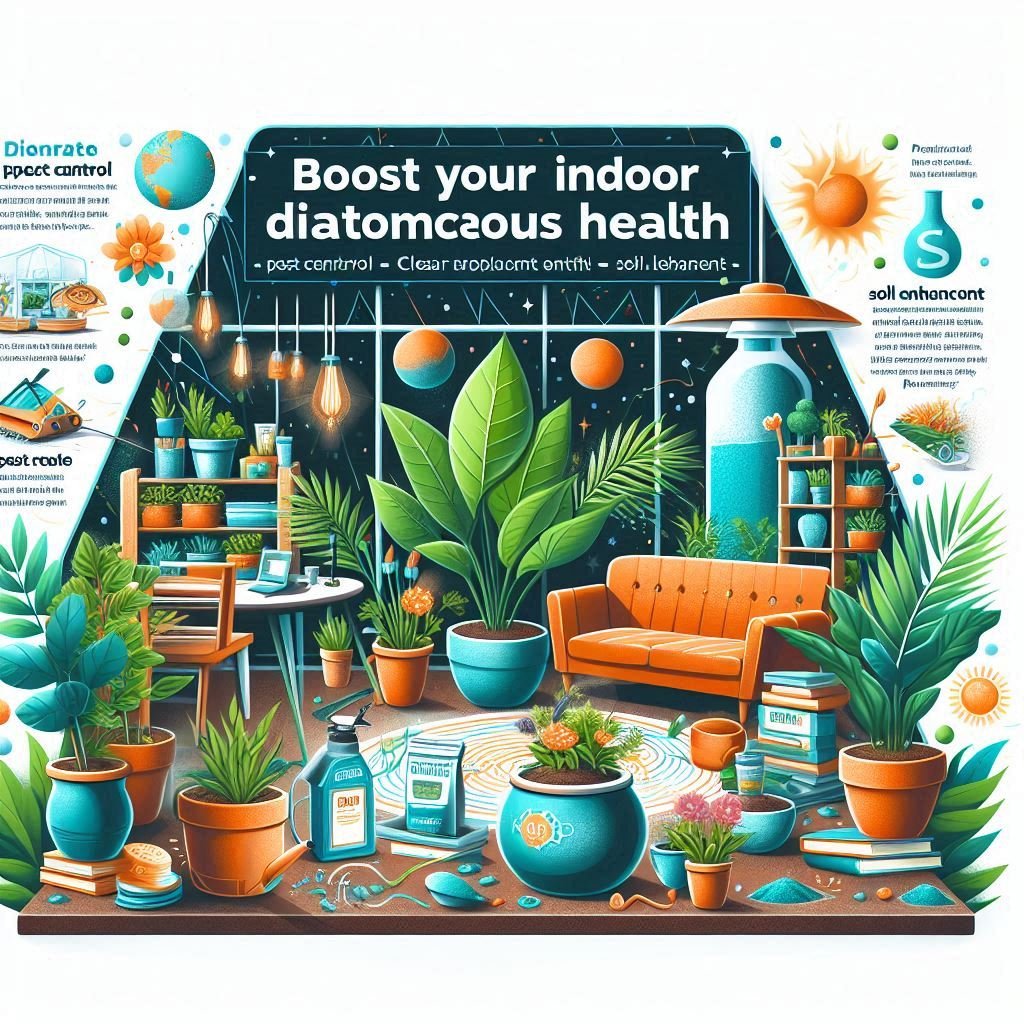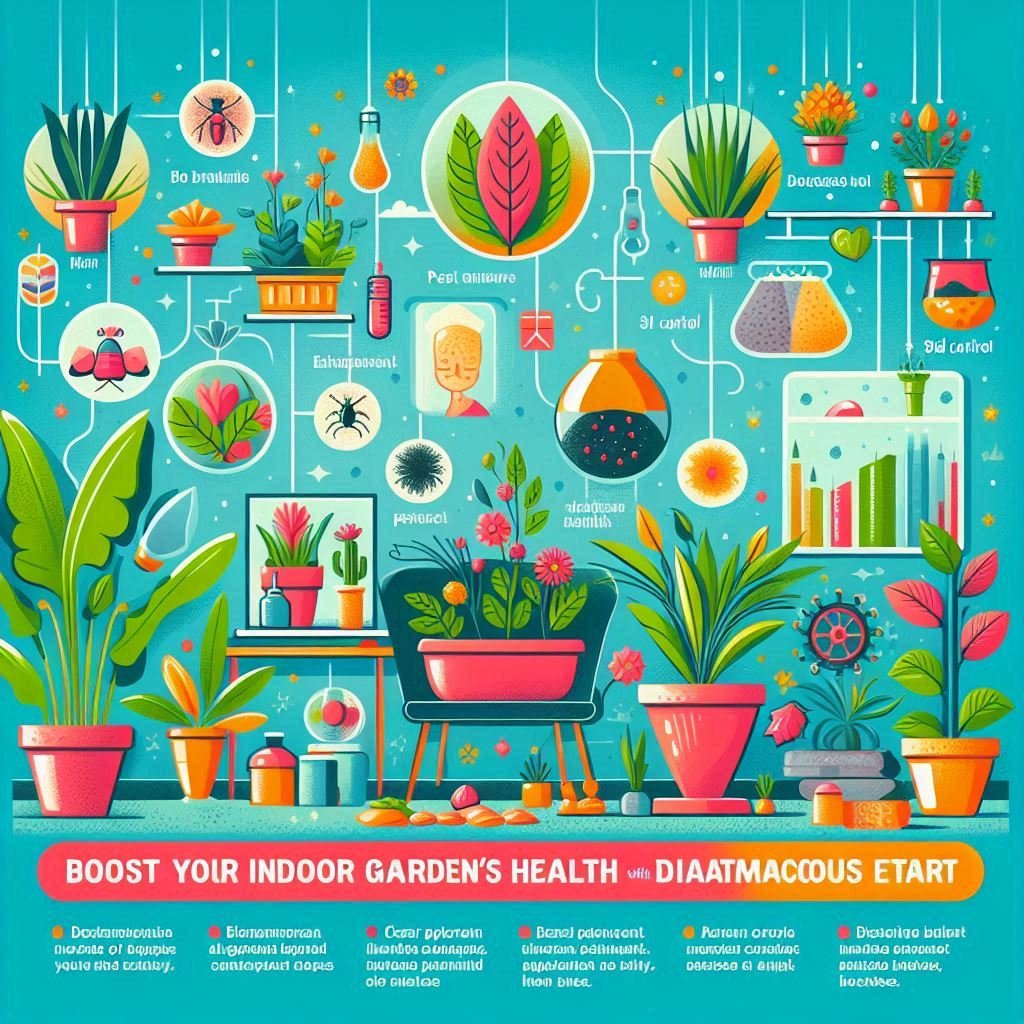
To have a successful indoor garden, you need to pay close attention to details and ensure that your plants have the best conditions to grow well. A helpful tool that many people don’t think about when caring for indoor plants is diatomaceous earth. Made from ancient algae fossils, this natural product provides many benefits for plant health and soil quality. It can help manage pests and increase drainage, making it a great resource for your gardening needs. In this article, let’s examine how diatomaceous earth can improve the health of your indoor garden, helping you grow a lush and green paradise right in your own home.
Know about Diatomaceous Earth
What is diatomaceous earth? A simple explanation
Diatomaceous earth, or DE for short, is a powder made from the remains of small water creatures called diatoms. These tiny algae have built up in the sediment of water bodies like rivers, streams, lakes, and oceans over thousands of years. When people mine and grind these deposits into a fine powder, it becomes diatomaceous earth. Here’s a great, natural method to handle pests in your garden. Diatomaceous earth (DE) works by piercing the insects’ outer layer with its sharp particles, leading them to dry out and perish. This makes DE a fantastic tool for gardeners to combat pests, and it’s safe for both you, your family, and your pets.
Interesting facts: sources and interesting features
Did you know that diatomaceous earth is found in deposits all over the world, including the United States, China, and Denmark? One of the great things about DE is its versatility. It’s not just for pest control; It is also used in products such as toothpaste, skincare items and even a natural deodorizer. DE’s high absorbency makes it perfect for blocking moisture and odors, which is why you can find it in cat litter. Additionally, it is an excellent natural filter, used in water purification and even beer brewing. This versatile mineral is truly a hidden gem among many everyday products.
Different types: food grade vs industrial grade and why it matters
When shopping for diatomaceous earth, you will encounter two main types: food grade and industrial grade. Food grade DE is pure and safe for human consumption. It is also used in food storage to keep pests away and even as a dietary supplement for detox purposes. On the other hand, industrial grade DE contains high levels of crystalline silica and other impurities, making it unsuitable for consumption. This type is used for filtration, construction materials, and other industrial applications. Knowing the difference is crucial, especially when using DE in your garden or home. Always choose food grade DE to ensure safety and effectiveness in your indoor gardening endeavors.
Why Diatomaceous Earth is a Game-Changer for Your Indoor Garden

If you’re looking to level up your indoor gardening game, diatomaceous earth (DE) might just be the secret ingredient you’ve been missing. Here’s why it’s such a game-changer:-
Natural Pest Control: How it deals with common pests like aphids and mites
Imagine annoying little bugs causing chaos in your cozy indoor space. Here comes diatomaceous earth, your eco-friendly hero. This fine powder seems harmless, but to pests like aphids and mites, it’s a nightmare. Just sprinkle it around your plants, and see those unwelcome guests get stopped in their tracks. And the best part? It’s totally safe for your furry pals and plant-loving buddies.
Soil Booster: Improves soil structure, aeration and drainage
talk dirty Well, soil, to be precise. You want it to be fluffy, airy and perfect for your green babies to thrive. That’s where diatomaceous earth swoops in to save the day. By adding DE to your soil mix, you’re giving it a much-needed boost. This helps loosen compacted soil, allowing those precious roots to breathe and expand comfortably. Plus, it helps with drainage, so you can say goodbye to soggy roots and hello to happy, healthy plants.
Mineral rich fertilizers: benefits of trace minerals for plant growth
Plants, just like us, need their vitamins and minerals to flourish. Luckily, diatomaceous earth is like a treasure trove of essential nutrients for your leafy buddies. As it breaks down, it releases trace minerals like silica, calcium, and magnesium into the soil, giving your plants the TLC they deserve. Say hello to stronger stems, lusher foliage, and blooms that’ll make your heart skip a beat. With DE in your corner, your indoor garden is bound to be the envy of all your friends.
Easy Ways to Use Diatomaceous Earth in Your Indoor Garden

Diatomaceous earth (DE) is a versatile and natural solution for maintaining a healthy indoor garden. Here are some easy ways to incorporate DE into your gardening routine:-
Step-by-step guide to dusting plants for pest control
To effectively control pests with diatomaceous earth, start by ensuring your plants are dry, as DE works best when applied to dry surfaces. Then, using a small handheld duster or a soft brush, lightly dust the leaves and stems of your plants with a thin layer of DE. Pay special attention to the undersides of leaves, as pests often hide there. Reapply as needed, especially after watering or after rain.
Mixing it into potting soil: how and why
Another way to use diatomaceous earth in your indoor garden is by mixing it into your potting soil. Simply add a tablespoon or two of DE per gallon of potting mix before planting your seeds or transplanting your seedlings. This helps improve soil drainage, aeration, and moisture retention, while also providing natural pest control as the DE particles discourage pests like fungus gnats and ants.
Safe handling tips to protect you and your plants
While diatomaceous earth is usually safe for use, it’s crucial to handle it with care to prevent inhaling the tiny particles that can irritate your lungs and respiratory system. When using DE, remember to wear a dust mask, gloves, and protective eyewear. Also, make sure to keep it out of reach of children and pets as swallowing it can lead to digestive issues.
Just by using these easy techniques, you can make the most of diatomaceous earth to keep your indoor garden free from pests and flourishing. Whether you’re sprinkling it on your plants to control pests or mixing DE into your potting soil, it’s a safe and efficient method to support the health and vigor of your plants.
Success Stories of Indoor Gardeners
Discover the inspiring journeys of indoor gardeners who have unlocked the secrets to vibrant and thriving plants with the help of diatomaceous earth (DE):
Real life experience: Indoor gardeners share their success with diatomaceous earth
Meet Sarah,
A passionate indoor gardener who encountered persistent pest problems with her beloved herbs and vegetables. Frustrated by the inefficacy of traditional pesticides and wary of their harmful effects on her indoor oasis, she turned to diatomaceous earth (DE) as a natural remedy. Sarah meticulously applied DE to her plants, covering both foliage and soil surfaces.
Within weeks, she noticed a remarkable decrease in pest activity, transforming her garden into a flourishing sanctuary. Now, Sarah tends to her plants confidently, knowing she’s embraced a safe and sustainable pest control solution. This journey has not only safeguarded Sarah’s plants but also inspired her to adopt a more holistic approach to indoor gardening. With DE, she fosters healthy growth without compromising environmental integrity. Sarah’s success story underscores the transformative potential of natural solutions, reminding us to cultivate thriving indoor gardens in harmony with nature.
Before-after photos to show the transformation
Witness the incredible transformations indoor gardeners like Jason capture in before-and-after photos they share. Her once-struggling houseplants are now thriving with lush foliage and vibrant blooms, thanks to adding DE to her potting soil. Visible improvements speak volumes about DE’s effectiveness in promoting plant health and vigor.
Testimonials highlighting positive effects on plant health
Listen to personal stories from indoor gardeners such as Emily, who share how diatomaceous earth (DE) has positively impacted the health of their plants. DE has significantly improved soil quality, boosted plant resilience against pests and diseases, making a remarkable difference in their gardening experience. Emily expresses how she has restored her belief in her gardening skills and takes pride in the flourishing indoor garden she has created.
The stories of success demonstrate how diatomaceous earth can help your indoor garden flourish. Through actual experiences, beautiful images, and heartfelt feedback, it’s evident that DE is not just a gardening item – it’s a key to helping plant enthusiasts like you thrive.
Avoid Common Mistakes

Diatomaceous earth (DE) is a powerful tool for pest control and plant health in your home garden, but it’s essential to use it correctly to avoid common problems. Here are some tips to help you avoid mistakes:
How to prevent overuse and potential tree damage
A common mistake gardeners make when using diatomaceous earth is over-application, which can potentially cause plant damage. To prevent this, apply DE sparingly and only as needed. Avoid piling it up around the base of plants or trees, as excessive clumping can suffocate roots and stunt growth. Instead, lightly dust the affected areas or create a barrier around the plant without damaging your garden.
Effective application techniques for maximum benefits
To get the most benefits from diatomaceous earth, it is crucial to use effective application techniques. When applying DE to plants, ensure thorough coverage of both upper and lower leaf surfaces as well as surrounding soil. Use a broom or soft brush to distribute the powder evenly, paying particular attention to areas where insects are most likely to hide. Reapply as needed, especially after water or rain, to maintain its effectiveness.
To identify which pests diatomaceous earth can and cannot control
Although diatomaceous earth is effective against many common indoor garden pests, it is important to understand its limitations. DE works best on insects with exoskeletons such as ants, aphids and beetles by absorbing external shell oils and waxes, ultimately leading to dehydration and death. However, it may not be as effective against soft-bodied insects such as caterpillars or slugs. For these pests, consider combining DE with alternative control methods or other pest management strategies for best results.
By avoiding common mistakes and using diatomaceous earth responsibly, you can harness its full potential to protect your indoor garden from pests while promoting plant health and vitality.

** FAQs:Answers to Your Questions:**
1. Is diatomaceous earth safe for pets and children?
Yes, food-grade diatomaceous earth (DE) is generally safe for pets and children when used as directed. However, it’s essential to avoid inhalation of the dust, as it can irritate the respiratory system. Keep DE out of reach of children and pets to prevent accidental ingestion. Additionally, consider using precautions such as wearing gloves and a dust mask when handling DE to minimize exposure.
2.How often should I use my plants?
The frequency of diatomaceous earth application depends on various factors, including the severity of pest infestation and environmental conditions. As a general guideline, reapply DE to your plants after watering or rainfall, as moisture can reduce its effectiveness. Monitor your plants regularly for signs of pest activity, and apply DE as needed to maintain protection.
3.Can I combine diatomaceous earth with other garden products?
Yes, diatomaceous earth can be combined with other garden products for enhanced effectiveness. For example, you can mix DE with water to create a spray solution for applying to plant foliage. Additionally, DE can be incorporated into potting soil or combined with other organic pest control methods, such as neem oil or beneficial insects, for comprehensive pest management. However, always read product labels and follow instructions carefully to ensure compatibility and avoid adverse effects on plants or the environment.
